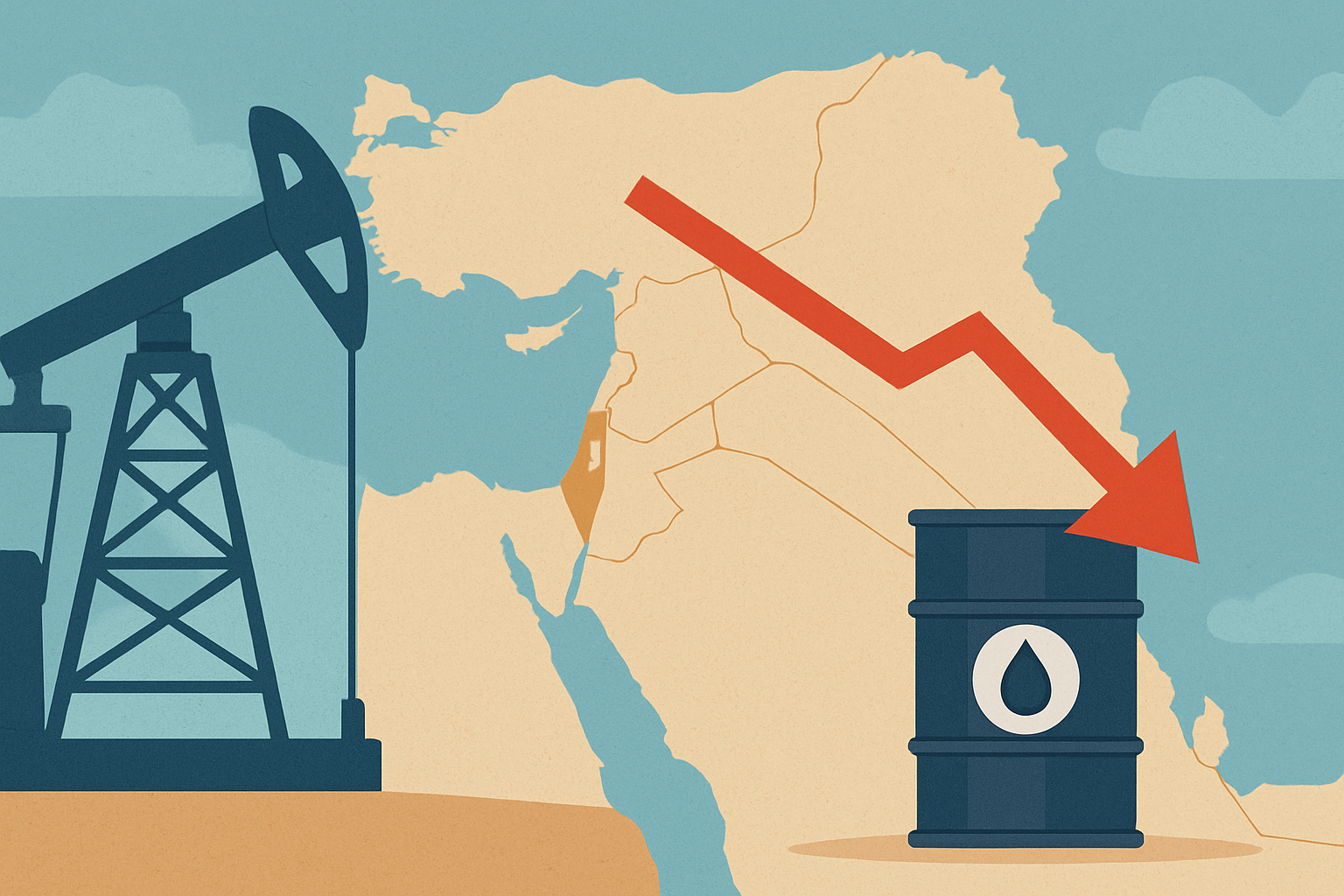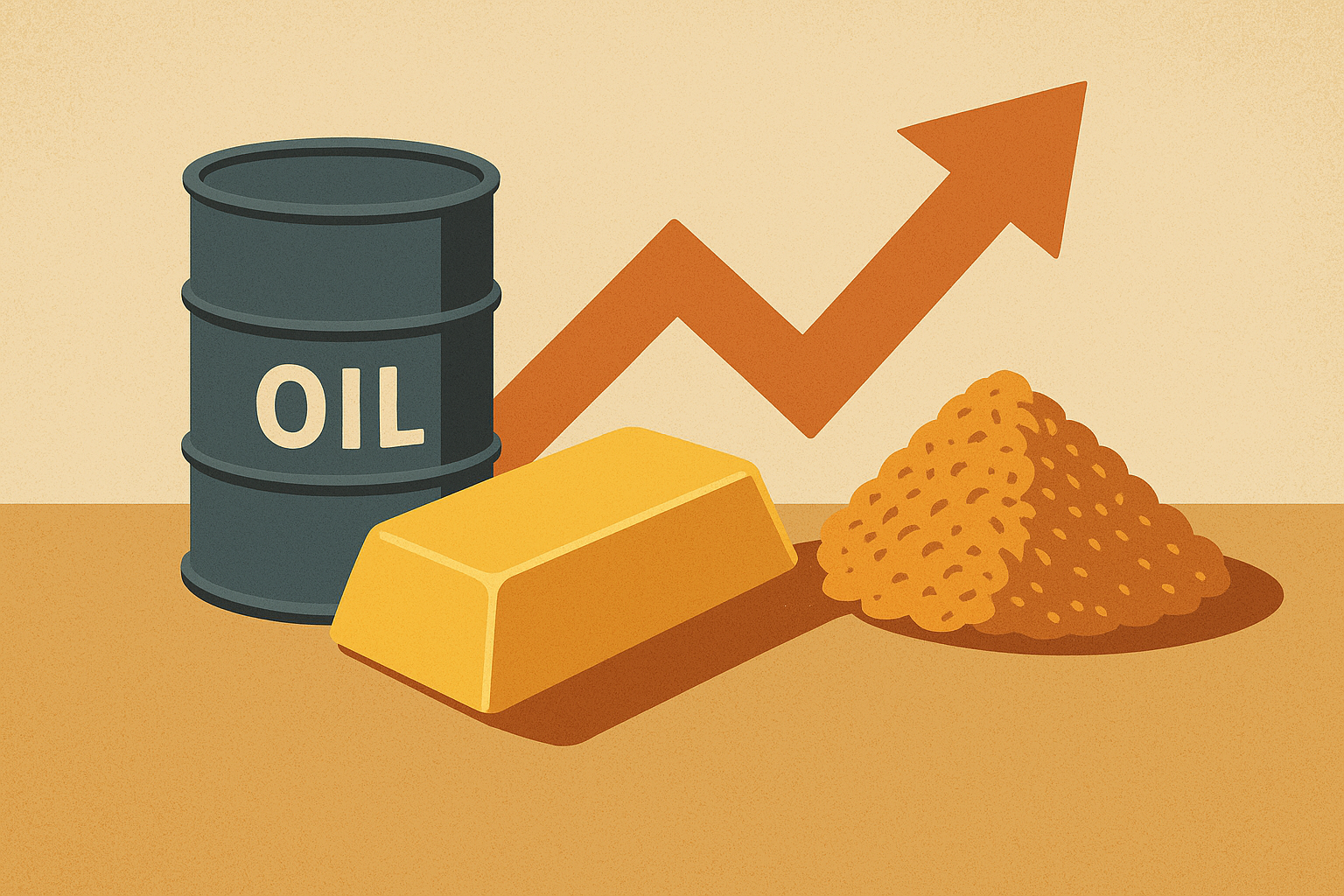After weeks of heightened volatility driven by Middle East tensions, oil prices took a sharp turn lower this week as a proposed ceasefire between Israel and Hamas eased fears of a broader regional conflict. Brent crude fell below US$87 per barrel, while West Texas Intermediate (WTI) slipped toward US$83, reversing gains built on geopolitical risk premiums that have dominated markets since early September.
According to Reuters, the announcement of a phased ceasefire—brokered by international mediators—helped cool concerns that regional instability would spill over into key oil-producing zones. The pullback followed a brief rally that had pushed Brent close to US$90, as traders priced in the risk of potential supply disruptions across the Middle East, particularly through the Strait of Hormuz, a chokepoint for nearly 20% of global crude shipments.
Oil’s Risk Premium Deflates as Ceasefire Offers Short-Term Relief
The geopolitical risk premium, which had been adding an estimated US$5–7 per barrel to global benchmarks, has started to unwind as the ceasefire talks gained traction. Analysts from Goldman Sachs noted that while the truce may not resolve deep-rooted tensions, it does lower the immediate probability of supply disruption—a key factor in crude price formation.
Meanwhile, a strengthening U.S. dollar index (DXY)—hovering near a six-month high—added downward pressure on commodities priced in dollars, making oil more expensive for foreign buyers. This dynamic, combined with mixed signals from the latest U.S. Energy Information Administration (EIA) report showing modest inventory builds, has added to bearish sentiment in the short term.
Despite the pullback, analysts caution that the market remains fragile. “The ceasefire offers temporary relief, but structural risks haven’t gone away,” said an energy strategist at UBS Global Wealth Management. “With OPEC+ continuing its production restraint and the U.S. shale response still muted, the downside for oil remains limited unless global demand weakens more than expected.”
Why This Matters for Investors
For investors, this development marks a critical juncture in the commodities market. The easing of geopolitical tension provides short-term breathing room, but oil remains one of the most sentiment-driven assets globally.
The latest downturn in crude futures could trigger a tactical reallocation among institutional investors. Energy-heavy portfolios that benefited from the geopolitical run-up may now look to lock in profits or rotate into sectors tied to demand recovery, such as transportation, refining, or renewable energy.
At the same time, the broader macro backdrop—characterized by persistent inflation, cautious central banks, and slowing industrial output—keeps the demand outlook in focus. Data from Bloomberg Economics shows global oil demand growth for 2025 is projected to slow to 1.2 million barrels per day, down from 2.3 million barrels in 2024, as China’s recovery plateaus and Europe’s energy-intensive industries continue to contract.
Investors tracking energy ETFs like $XLE (Energy Select Sector SPDR Fund) or oil majors such as $XOM (ExxonMobil) and $CVX (Chevron) may see short-term corrections but potentially renewed strength if OPEC+ holds the line on production discipline through Q4.
Future Trends to Watch
1. OPEC+ Policy Moves:
The next OPEC+ meeting in November will be pivotal. Any signal of extended cuts or production flexibility could stabilize prices around current levels. Historically, OPEC+ has shown a preference for defending a price floor near US$80 per barrel.
2. U.S. Shale Response:
U.S. shale output remains restrained despite higher prices earlier in the year. The latest Baker Hughes rig count data shows a slight uptick, but production growth remains below pre-pandemic levels—partly due to capital discipline among producers and rising drilling costs.
3. Global Demand and Refining Margins:
Asian refining margins, a key indicator of downstream demand, have softened slightly, suggesting near-term pressure on crude imports. However, the expected pickup in jet fuel and gasoline demand heading into the holiday season could provide a modest rebound in Q4.
Key Investment Insight
For investors, the short-term cooling in oil prices could offer a window to rebalance exposure. Those holding leveraged positions in crude-linked instruments might consider partial de-risking, while long-term investors could look at dips as entry points for high-quality integrated energy firms with strong dividend yields.
Energy equities have historically outperformed during the later stages of tightening cycles—especially when inflation remains sticky. However, maintaining hedges or protective puts may be prudent given ongoing geopolitical uncertainty and potential U.S. policy responses in election season.
Stay Ahead with Exploration Stocks
As energy markets recalibrate amid shifting geopolitical currents, investors are urged to keep a close watch on policy updates, OPEC+ actions, and evolving macroeconomic signals.
Stay informed with explorationstocks.com—your trusted source for timely, data-backed insights on global commodities, energy markets, and emerging investment opportunities shaping the next phase of market growth.






